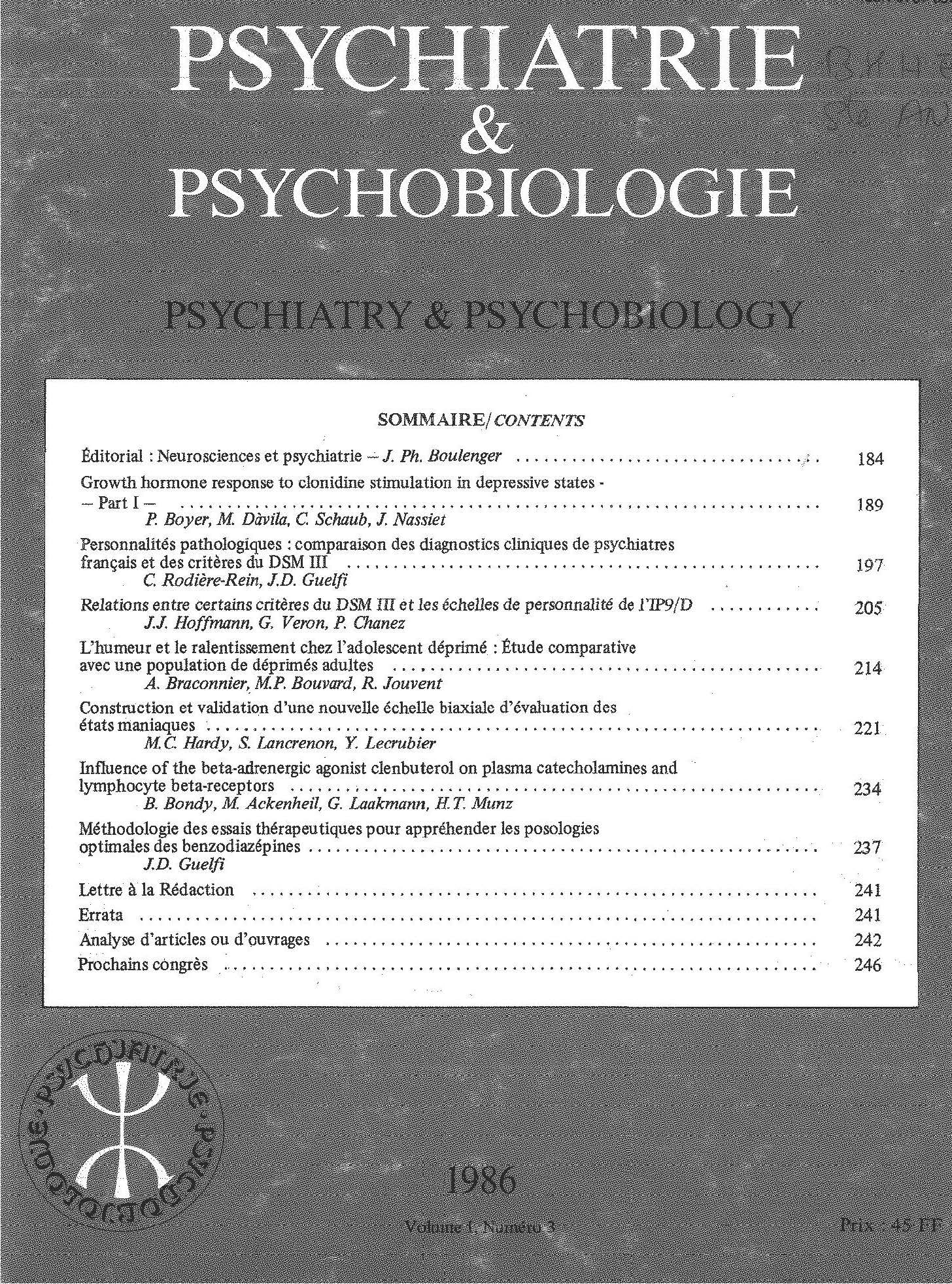Article contents
Psychiatrie et épidémiologie
Published online by Cambridge University Press: 28 April 2020
Résumé
L’épidémiologie psychiatrique s’est beaucoup développée depuis trente ans. Après avoir rappelé les définitions et méthodes fondamentales en épidémiologie, nous décrivons des progrès accomplis en épidémiologie psychiatrique. Parmi eux, la définition des cas, les techniques d’identification des cas, et la recherche de facteurs de risque sont présentés ici. Pour les illustrer, certaines connaissances actuelles sur les facteurs de risque dans la schizophrénie et la dépression sont brièvement décrits. Ensuite, les travaux en psychiatrie de l’enfant sont brièvement présentés en insistant sur quelques difficultés spécifiques à la recherche en pédopsychiatrie. Finalement, après avoir fait le point de la situation française, quelques opinions communes qui freinent l’essor de la recherche épidémiologique sont passées en revue. Les conclusions soulignent la possibilité et la nécessité de développer cette approche multi-disciplinaire en psychiatrie.
Summary
During the past thirty years, psychiatric epidemiology has evolved rapidly. We present some introductory concepts of the epidemiologic method that include discussion of the types of measures used, such as incidence and prevalence rates, and relative risks. We briefly introduce the principal study designs (follow-up or cohort studies, case control research) and comment on their advantages and drawbacks. Methodological advances have been achieved, especially with regard to case definition and case finding techniques. Different definitions of a case are reviewed, with special focus on the dichotomy between the dimensional and categorical approaches. Case finding techniques have evolved through the identification of different sources of error in information gathering and clinical reasoning. Research on risk factors is subsequently presented here from a general perspective. Several types of risk factors in psychiatry are enumerated, including genetic, biological factors and psychosocial variables. Then, risk factor research in schizophrenia and depression is briefly described and analyzed. This section highlights the advances which have been achieved in these diagnostic categories. Child psychiatry research issues are considered, and attention is drawn to problems related to the boundary between the normal and the pathological which is confounded by developmental factors. Nevertheless, several good studies have advanced the present State of knowledge and methods in child psychiatry research, and they are presented. The situational specificity of behavioral/ emotional disorders in childhood have led researchers to the conclusion that a two-stage design procedure is the most efficient in child psychiatric epidemiology. The importance of these studies for health Services planning is stressed. Finally, after an overview of the French situation in this field, we comment on frequently expressed opinions which tend to slow down the development of epidemiologic research. We specifically criticize the ideas that: - the epidemiologic approach can only be applied to quantitative and easily measured variables; - research Instruments or results from epidemiologic studies will be used in a negative or questionnable way; - classification and rigorous diagnostic categories are not useful. Conclusions draw attention to the possibility and importance of this multidisciplinary approach to research in psychiatry.
Keywords
- Type
- Research Article
- Information
- Copyright
- Copyright © European Psychiatric Association 1986
References
Bibliographie/References
- 2
- Cited by



Comments
No Comments have been published for this article.